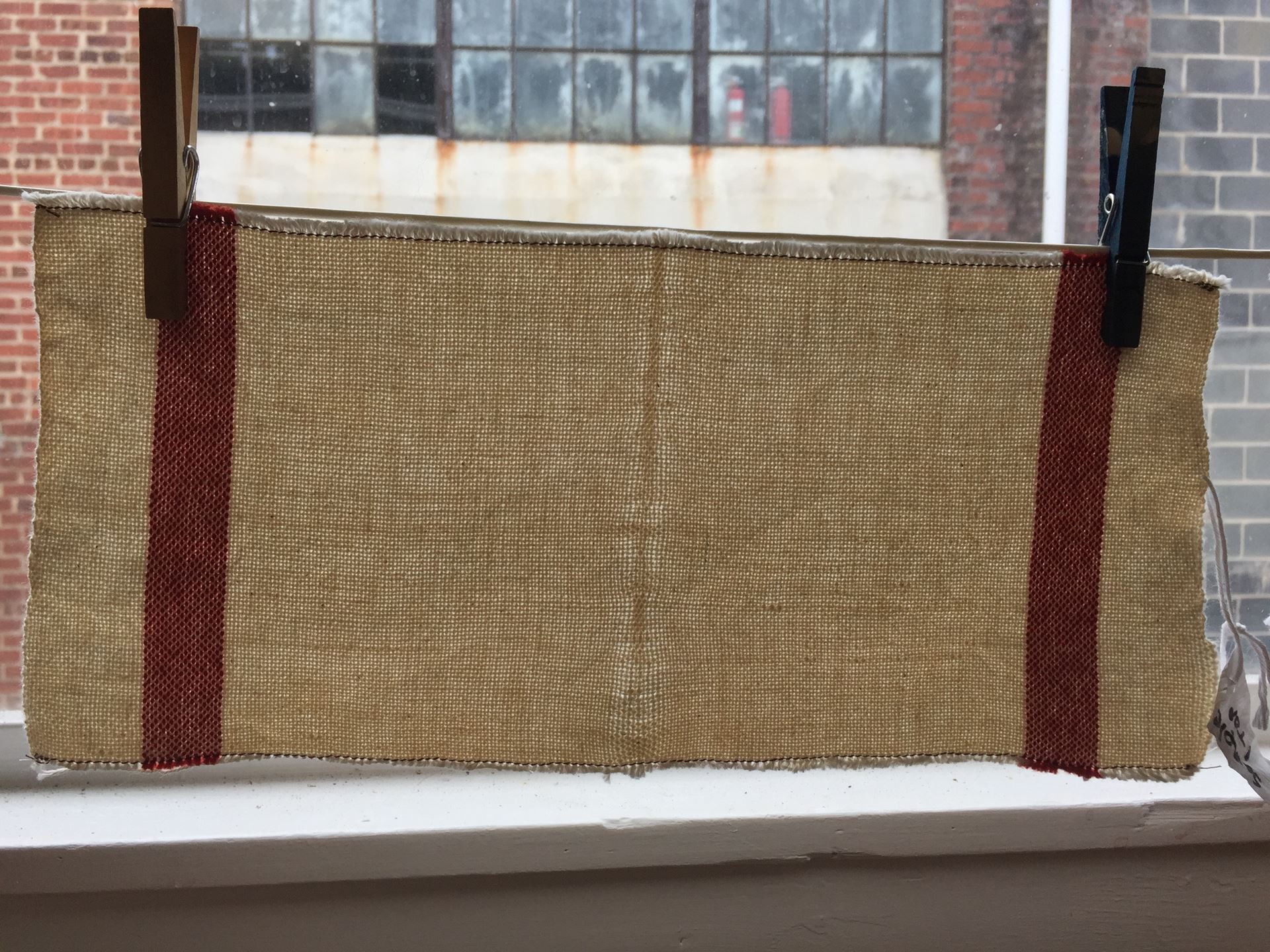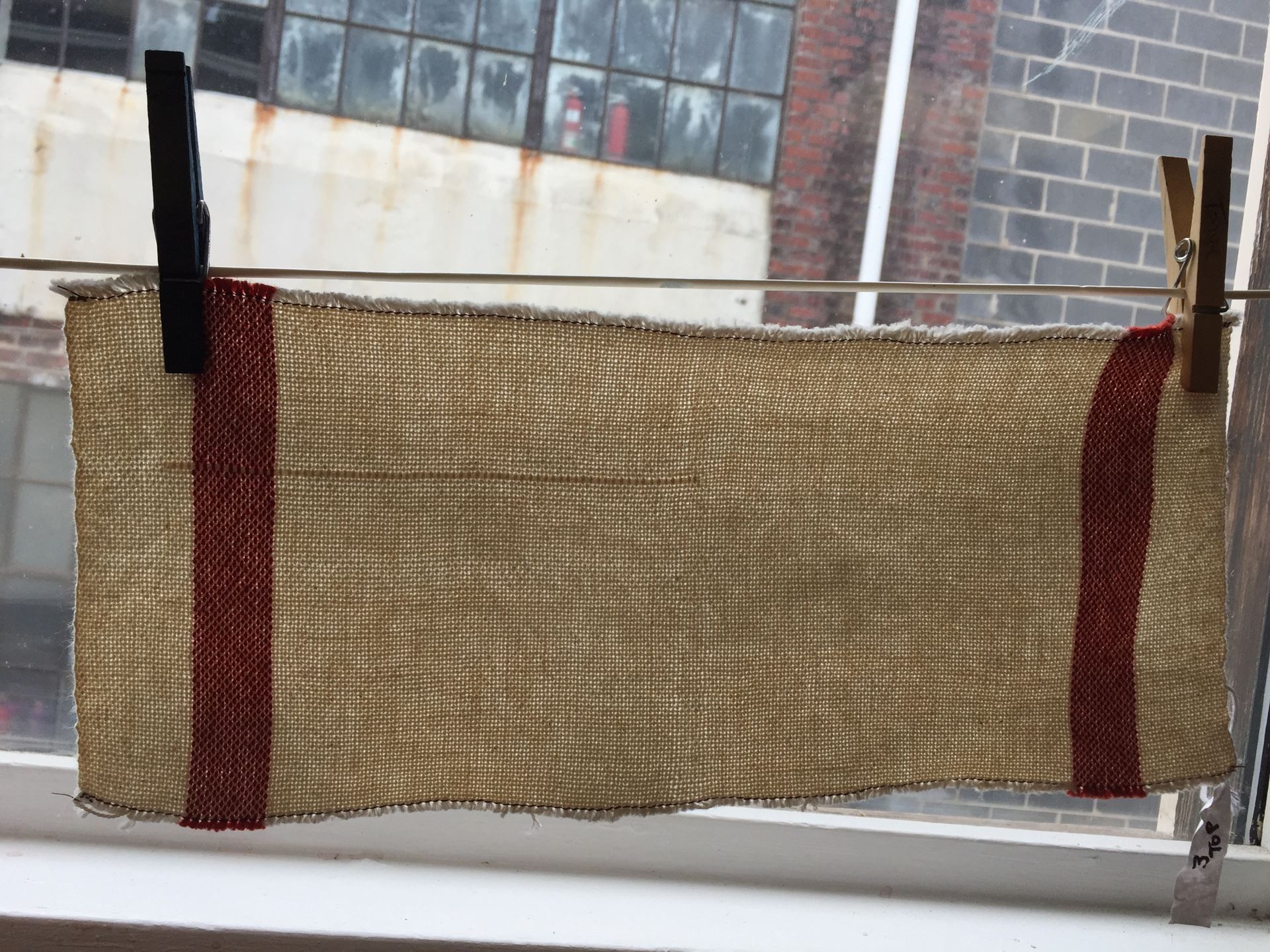My stint as Local Cloth Resident Artist on Thursdays started with a wonderful weaving challenge. Judith Henry is an intermediate weaver, coming to weaving from an extensive knitting background. She wants to weave a tablecloth, but the width is not possible on her loom. She read about using double weave to weave a cloth twice as wide as her loom. The two layers are connected on only one selvage. The challenge, her research revealed, was how to deal with draw-in at the fold side which can make the fold very obvious when it is opened out.
started with a wonderful weaving challenge. Judith Henry is an intermediate weaver, coming to weaving from an extensive knitting background. She wants to weave a tablecloth, but the width is not possible on her loom. She read about using double weave to weave a cloth twice as wide as her loom. The two layers are connected on only one selvage. The challenge, her research revealed, was how to deal with draw-in at the fold side which can make the fold very obvious when it is opened out.
She came to me for help finding the best solutions. I am not an expert in double-width weaving, so I researched recommendations from several sources and set up a sampling study for her to explore them.
Judith signed up for two six-hour packages of my Shaft-Loom Weaving On-going Classes and just completed her study. The results were very dramatic. In addition to overall suggestions for minimizing draw-in — leaving enough weft in the shed, advancing the warp every 1 to 1.5 inches and winding bobbins very tightly — I offered a series of experiments to test techniques specific to double-width.
The first was to position the fold on the weaver’s best selvage. Most weavers find one selvage always weaves more neatly than the other. For Judith, it was the right selvage, so she made sure to thread the warp stripes in her pattern so the fold would be on her right.
We tried an adjustment in sleying at the fold side, choosing a recommendation to sley the second grouping (of 4 ends) from that selvage at half density (2/dent). The final four ends on that side were sleyed at normal density(4/dent). Then she wove several different samples: one with a fishing line floating selvage at the fold; one with a fishing line floating selvage on both sides (All the fishing line is removed after weaving, so it doesn’t permanently close the “open” side.); and another with fishing line threaded through heddles with the last two ends of each layer, without floating selvages.
Judith also sampled each of these options with no density adjustment on the fold side. Yes, this meant cutting off and wet finishing samples as she wove, so she got lots of practice cutting off and lashing back on. Because we were in the Local Cloth studio, I could wash and press the samples while she was weaving, so we had immediate results to judge.
We removed the fishing line, and tried threading in smooth yarn with the last two ends on the fold instead, trying this with a couple of different density adjustments at the selvage, and two different sizes of mercerized cotton.
In the end, Judith achieved the best results (an invisible fold line) with her third sample which threaded the fishing line with the last four ends on the fold side. I’ve included some pictures of samples 1-3 hanging in the studio after wet finishing: one with no fishing line, second with fishing line floating selvage at fold, third with fishing line threaded into selvage ends.



Another double-weave tip: use a mirror to check for weaving errors on the bottom layer. That doubled weft in sample 3 turned out to be a twist in the 8/2 weft that got caught in the shed. We didn't see it until it was cut off the loom.
None of the samples using yarn instead of fishing line produced an invisible fold. We acknowledged this was a narrow sample with which she was taking great care at the selvages. On a wider piece when the shuttle is being thrown through the shed, this may work better.
She also liked the results using a fishing line floating selvage on the open side, and plans to use cotton-linen blend for her tablecloth vs. the 8/2 unmercerized cotton she used in her sampling. All of which will require…more sampling. So for the tablecloth, she will add another yard of warp, sample those variables, and cut them off and wash them before making her final decisions.
Oh, and we have one other recommendation for anyone who wants to conduct similar experiments: colored fishing line vs. clear is a lot easier to manage.
If you have a weaving challenge you would like to explore, or you have always wanted to give weaving a try, please get in touch. I’d love to help you.
Karen
